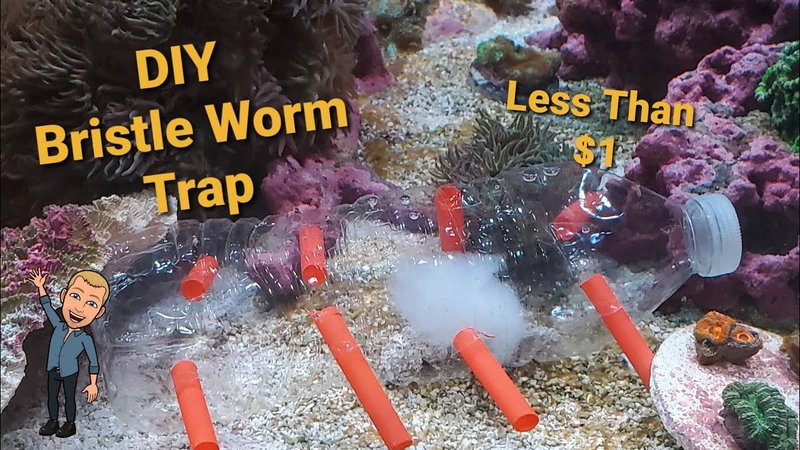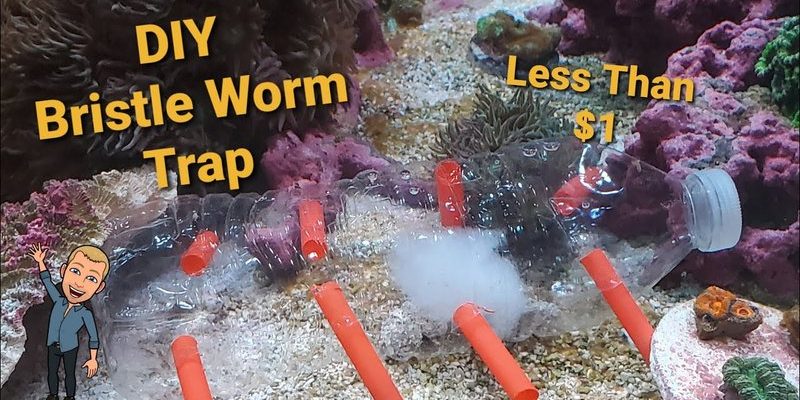
Cleaning routines are essential in any aquarium setup, whether you’re using a standard tank or one from a brand like AquaClear. A well-maintained tank not only looks better but also promotes the overall health of its inhabitants. So, let’s dive into some cleaning practices that will help you tackle bristle worms while keeping your aquarium vibrant and thriving.
Understanding Bristle Worms: The Basics
Before we jump into cleaning routines, let’s take a moment to understand what bristle worms are. These creatures are often found in marine environments and can actually be beneficial to some extent. However, when their numbers get out of control, they can compete for food and resources, creating an imbalance in your tank.
Bristle worms thrive in tanks that have excess organic matter and detritus. If you think about it, they’re like scavengers, cleaning up after a messy meal. But if there’s too much for them to clean, their population can explode. That’s why a proactive cleaning routine is crucial. By minimizing the food sources they rely on, you can control their numbers effectively.
Regular Water Changes
One of the most important routines in any tank cleaning schedule is performing regular water changes. This is the equivalent of refreshing the air in a room—clearing away the old to make way for the new.
For a typical aquarium, you should aim to change 10-15% of the water weekly. This helps to reduce nutrient levels and dilutes harmful toxins that can encourage bristle worms to thrive. To do this, simply:
- Gather your supplies: a siphon, a new bucket, and your dechlorinated replacement water.
- Use the siphon to remove old water, targeting areas with accumulated waste.
- Add fresh, treated water back to the tank slowly, ensuring you maintain the right temperature and salinity.
By maintaining clear, clean water, you’re not just benefiting your fish; you’re actively discouraging the growth of bristle worms and other unwanted pests.
Substrate Maintenance
Your tank’s substrate plays a pivotal role in its overall health. Just like a garden bed, a clean substrate reduces the chances of pests like bristle worms taking root.
To maintain your substrate, you should regularly stir it up to prevent compacting and reduce the build-up of organic matter. Here’s how to do it:
- Use a gravel vacuum during water changes to remove debris from the substrate.
- Consider using a fine net or mesh to catch larger organic materials without disturbing the beneficial bacteria.
- Avoid overfeeding your fish, as leftovers can settle into the substrate and provide food for worms.
By keeping your substrate clean, you create an environment that’s less inviting to bristle worms while promoting healthy bacteria growth that benefits your entire tank.
Cleaning Tank Décor and Equipment
Cleaning your tank’s decorations and equipment is another key aspect of minimizing bristle worms. Just like cleaning out your garage, it might seem tedious, but it’s necessary for a healthy environment.
Make it a regular practice to remove and clean your tank’s decorations, filters, and equipment. Here’s a step-by-step approach:
- Turn off your equipment and unplug everything.
- Remove decorations and soak them in a solution of water and vinegar or bleach (make sure to rinse thoroughly after!).
- Clean your filter according to your manufacturer’s recommendations, replacing any necessary components.
By maintaining a clean setup, you reduce the chances of bristle worms finding hidden spots to thrive and reproduce. Plus, it keeps your tank looking great!
Monitoring Feeding Practices
Let’s talk about feeding—another crucial factor when it comes to minimizing bristle worms. Overfeeding can lead to excess organic matter in your tank, providing a feast for these worms.
To keep their food sources in check, consider these practices:
- Only feed your fish what they can consume in a few minutes. If there’s leftover food, it’s time to reassess portion sizes.
- Incorporate a variety of foods, as this can encourage your fish to eat everything and leave less waste behind.
- Use high-quality food to reduce the amount of waste produced through uneaten, poor-quality options.
By managing your feeding habits, you help maintain a balanced ecosystem and discourage the growth of bristle worms.
Introducing Natural Predators
Another effective strategy for managing bristle worms is to introduce natural predators into your tank. Having the right fish or invertebrates can help keep their population in check without disrupting the balance of your aquarium.
Some fish that are known to eat bristle worms include:
- Wrasses, particularly the Sixline Wrasse.
- Certain types of Gobies.
- Some types of triggerfish.
Before adding any predators, it’s essential to research their compatibility with your existing tank inhabitants. You want to promote harmony, not chaos! Adding these creatures can provide a natural solution to your bristle worm dilemma while enhancing the biodiversity of your tank.
Regular Inspections and Maintenance Checks
Finally, regular inspections of your tank can make all the difference. Just like you wouldn’t ignore a growing weed in your garden, keeping an eye out for bristle worms can help you catch issues before they become significant problems.
During your routine checks:
- Look for signs of bristle worms or other pests during feeding times.
- Inspect all equipment and décor for any hidden guests during cleaning.
- Note any changes in water quality or fish behavior, which could signal an underlying issue.
By staying vigilant, you’ll be better prepared to address any bristle worm issues before they spiral out of control. Plus, regular checks can help you appreciate the wonderful ecosystem you’ve created in your tank.
Minimizing bristle worms in your aquarium is all about establishing and maintaining a consistent cleaning routine. Regular water changes, substrate maintenance, thorough cleaning of décor and equipment, mindful feeding practices, introducing natural predators, and performing regular inspections can help you keep these unwanted guests at bay.
By implementing these strategies, you not only create a healthier environment for your fish but also embrace the beauty of a balanced tank. So grab your cleaning supplies, and let’s get to work on making your aquarium a paradise—for both your fish and yourself!

